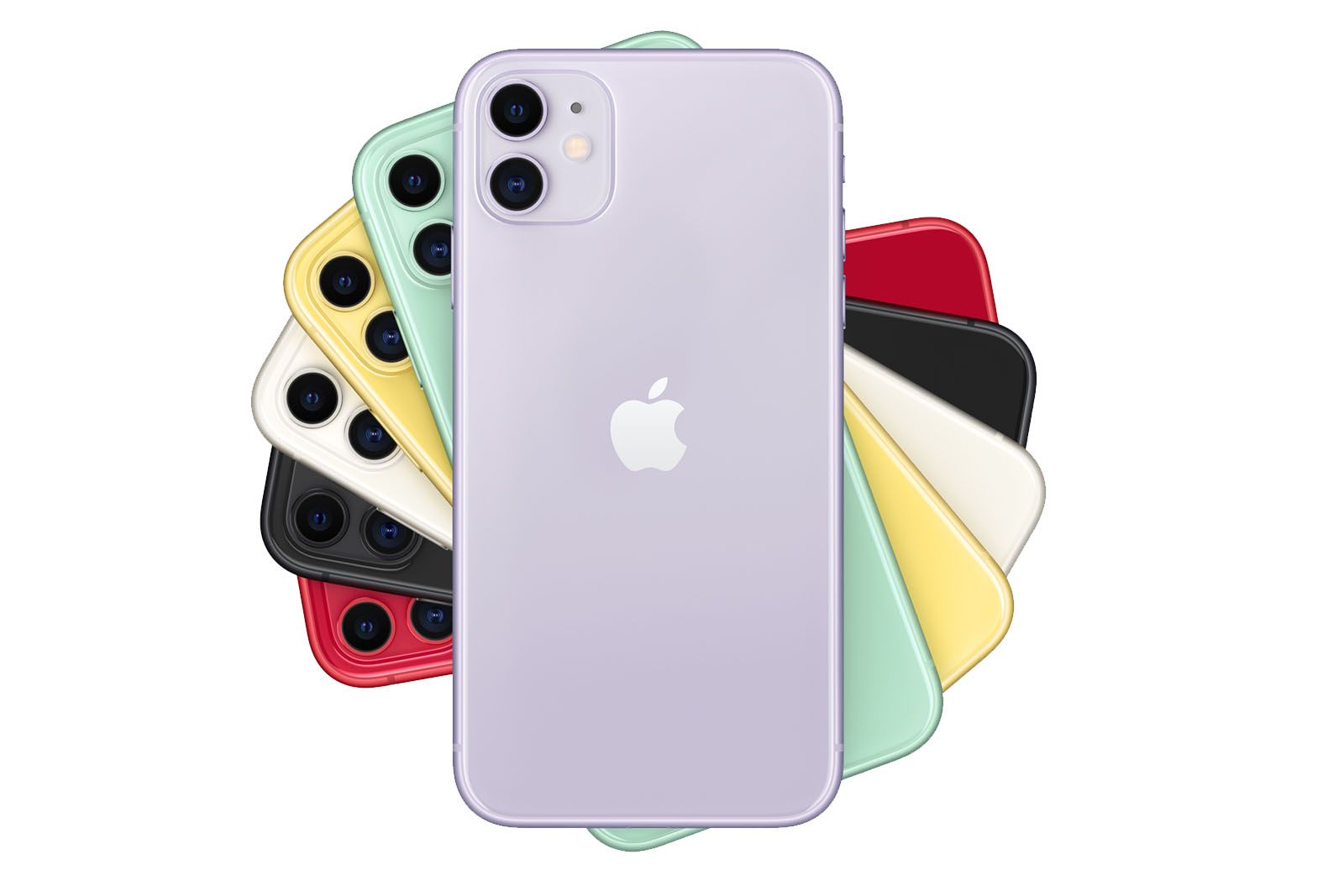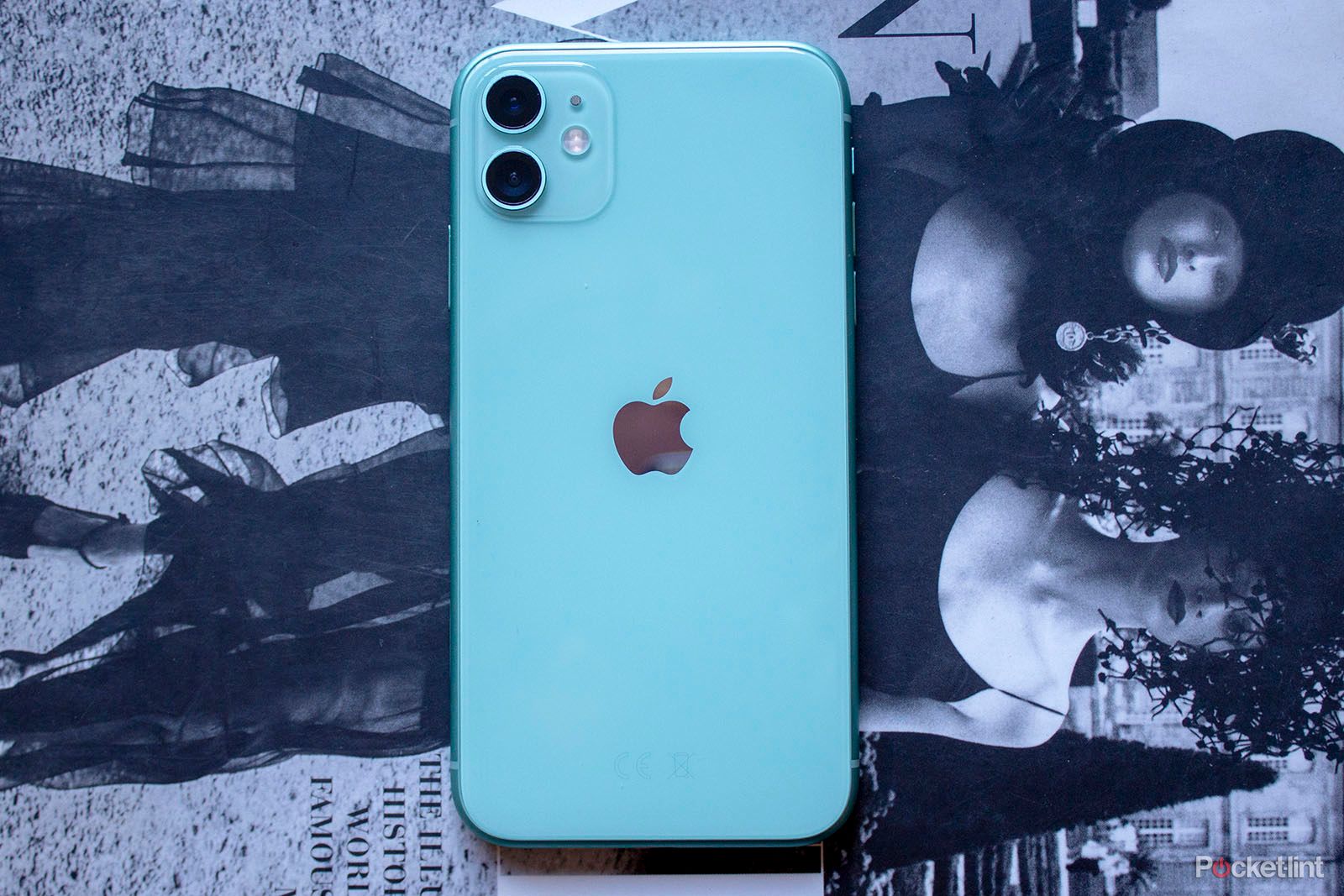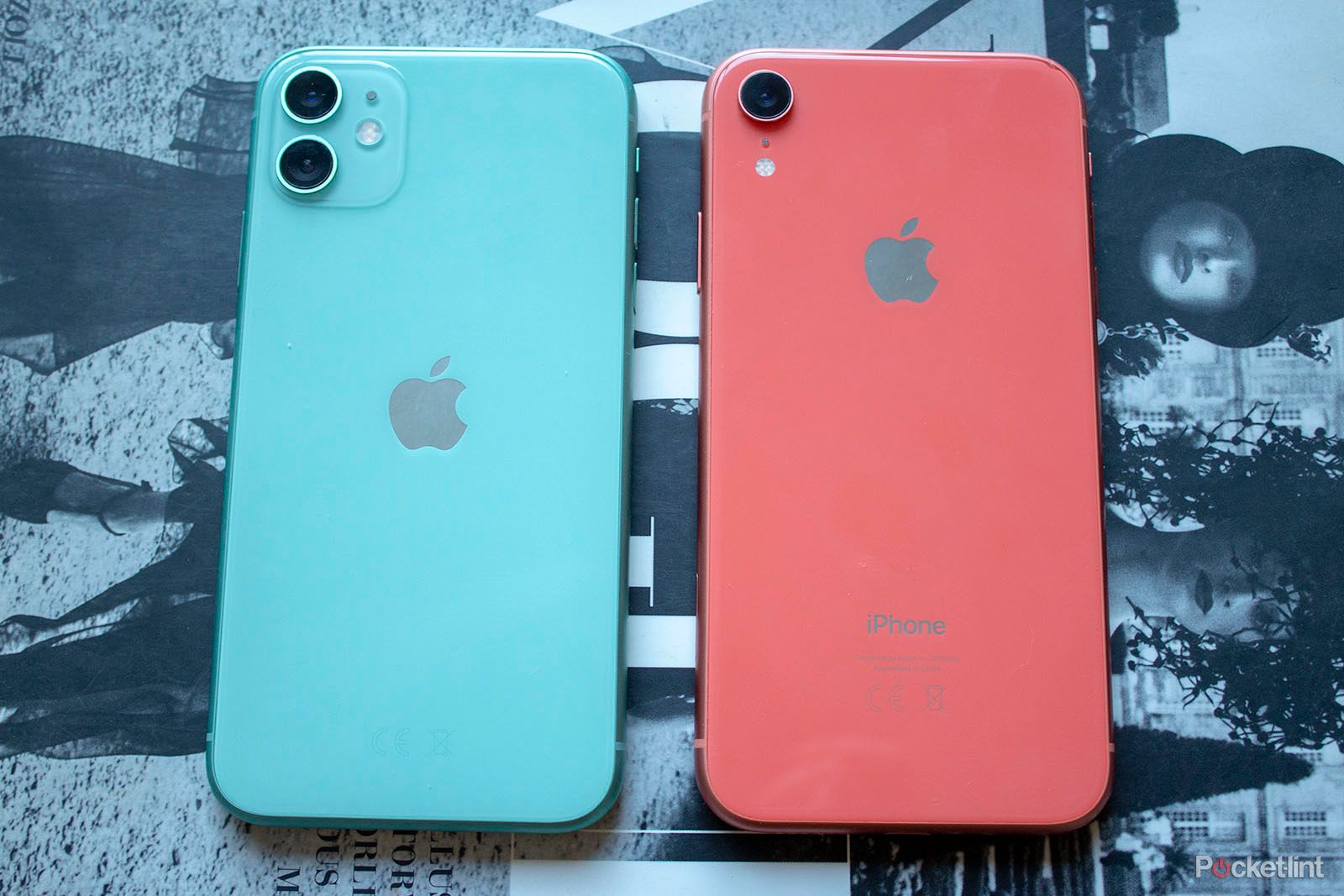When it launched, the iPhone 11 was predicted to be Apple's most popular iPhone of its then-flagship series, and for good reason. It followed on from Apple's iPhone XR, which was unsurprisingly one of the company's most successful phones in 2019. By offering all the important features people want with little compromise, the cheaper phone in the 11 series would always prove to be a tempting device.
Now, after a few years on the market, the iPhone 11 has much stiffer competition from other brands, and newer options like the iPhone 12 and iPhone 13.
In light of those releases, does the iPhone 11 make sense to buy in 2022?

Apple iPhone 11
The Apple iPhone 11 still delivers great performance in terms of battery, processor and camera capabilities, alongside a super smooth software experience. Newer iPhones have some great features if you can afford them, but the iPhone 11 is still an iPhone for the masses that delivers on all fronts.
- Lovely design with new colours
- Excellent performance across the board
- Fantastic battery life
- Good price
- Great results from dual rear camera
- No fast charger in the box
- No HDR on display
- No 5G support
Familiar design
- 150.9 x 75.8 x 8.3mm, 194g
- IP68 water and dust resistant
- New camera design
- Two new colours: green and purple
The Apple iPhone 11 is virtually identical in terms of design to its predecessor: the iPhone XR. In fact, from the front, you'd be hard-pressed to tell the difference between the two models, with both offering the same notched displays, as well as the same measurements and weight.
If you know your colours though you'll spot the newer model. The iPhone 11 still comes in black, white, yellow and Product(RED) like the iPhone XR, but all the colours are more muted. There is also a new green (it's mint) - our review unit - and a purple (it's lilac), compared to the blue and coral options of the XR, both of which are more pastel in their approach and lovely as a result.
The iPhone 11's chassis is aluminium - colour matched to the rear - which is still glass, but there's IP68 water and dust resistance, as well as a dual camera system in a somewhat polarising camera housing. You'll either love it or you'll hate it. We've got used to it - as you will too - and compared to a lot of big, black rectangles out there on other devices, it's comparatively pleasant to look at.
The glass on the rear is tough too and while the proud camera housing appears to be an add on at first glance, it isn't. Instead, it's part of the same single sheet of glass on the rear, with the camera section a frosted matte on the iPhone 11 to distinguish it further from the rest of the glossy rear - the opposite to what is offered on the iPhone 11 Pro.
Side-by-side, the iPhone 11 Pro is clearly the more premium device. The stainless steel chassis and matte glass rear of the Pro models are genuinely beautiful in the flesh - especially in the green and gold colours - but it's only something you'd notice (or yearn after) if you were holding them next to each other. In solidarity, the iPhone 11 is a lovely device.
Moving the Apple logo to the centre and removing the iPhone wording makes for a cleaner design compared to the iPhone XR, while the slim, curved edges the iPhone is now associated with, make the iPhone 11 a delight to hold - and comfortable despite the size. Place the iPhone 11 down on a table or desk and you'll still get the wobble from the camera section, but no more than you'd get from the iPhone XR, or any other flagship smartphones - many of which have camera bumps.
In terms of ports and buttons, everything is as it was with the iPhone XR. The volume buttons sit on the left edge with the mute button, while the Siri/wake button are on the right with the SIM tray. The Lightning port is centralised at the bottom of the device, flanked by speakers either side, and no, there is no 3.5mm headphone jack - as there hasn't been since the iPhone 7. Sadly, the 3.5mm adapter is no longer included in the box though, but it wasn't for the iPhone XR either.
Same display
- 6.1-inch Liquid Retina
- 1792 x 828 resolution, 326ppi
- No HDR
- Haptic Touch
The Apple iPhone 11 sports a 6.1-inch Liquid Retina screen - which is essentially an LCD display if you remove Apple language - and the same as what anyone with an iPhone 6, 7 or 8 model will be used to, but larger.
LCD displays are typically not as vibrant or impressive as OLED panels and that's true of the iPhone 11 too - the iPhone 11 Pro is crisper, its colours are punchier and its blacks are blacker - but you wouldn't necessarily notice this difference unless you were viewing the two models directly next to each other.
In reality, the iPhone 11 has a display that will more than satisfy most users. It's not as sharp in resolution as the likes of the iPhone 11 Pro, or the Samsung Galaxy S20 for example, and it doesn't offer mobile HDR compatibility like these other devices either, but the iPhone 11 still offers a decent screen with ample brightness and arguably more realistic colours than the Pro models and other OLED smartphones.
The omission of HDR on the iPhone 11 means that while it tries to deliver a HDR-like experience for compatible content, it's not the real deal. Smart HDR pictures don't pop as much when viewing on screen as they do on the iPhone 11 Pro, and you can't see as much detail on a dark TV show or movie that's available in HDR, as you can on the 11 Pro - but it's also one of the few compromises the iPhone 11 makes to the Pro models.
Viewing angles are good and images and text are crisp, while the iPhone 11 also supports a P3 wide colour gamut, as well as True Tone technology. True Tone is a feature Apple introduced with the iPhone 8 models, automatically adjusting the display to its surroundings when turned on - and it can make quite a big difference.
Haptic Touch is also on board the iPhone 11, as it is on the iPhone 11 Pro models. It's a technology Apple introduced on the iPhone XR that replaced the 3D Touch feature found on previous iPhones since the 6S. Like the MacBook's trackpad, Haptic Touch works by making you think you are moving something even though you aren't, allowing you to long press certain apps on the screen, like the torch or settings in Control Centre, but it won't offer shortcuts to most apps like 3D Touch did.
Since the iPhone 11's release Apple has made big strides on the display front, adding 120Hz refresh rates to the iPhone 13 Pro, so if you want the best screen on an Apple device then this model is now quite far behind the pace.
Photography at its heart
- Dual 12MP ultra wide (f/2.4) and main (f/1.8) cameras
- 12MP TrueDepth front camera
- Night mode, OIS, portrait mode, Portrait Lighting (six effects)
- 4K 60fps video front and rear
The biggest standout feature of the Apple iPhone 11 is the camera functionality - and we don't just mean because of its new Marmite housing. There are now two lenses on the rear - normal and ultra-wide - as well as new software-based features like night mode, marking the most significant difference between the 2019 device and the iPhone XR.
One of the biggest criticisms of the previous iPhones was the low-light photography capabilities - or lack thereof. Competing devices like Google's Pixel 3 and Huawei's P30 Pro have been significantly more capable than previous iPhones in terms of night shots, but the iPhone 11 models have attempted to rectify that and they do a pretty damn good job based on our experience.
Apple's night mode automatically detects when you are trying to take a photo in a low-light environment and adjust things accordingly. You can't turn the mode on - as you can with Pixel's Night Sight - and you can't adjust the image afterwards - a feature we would like to see appear in the future like the ability to adjust the depth on a portrait shot.
Instead, the iPhone 11 detects when you are taking a picture in low light conditions and how much you are moving the camera, with a small symbol appearing in the top left corner when the night mode is activated. Below the image on your screen, you'll see a slider showing a specific number of seconds, as well as the option to slide night mode off. The number of seconds available on the slider are dependant on various factors, but the iPhone 11 will know when you're using a tripod, for example, and give you a much longer exposure to produce better results.
Based on our testing, night mode works very well and the results are great - especially when compared to images without night mode on - but you do have to keep very still. Move and you'll find yourself with some quite arty shots at times, while other times you'll just get blur.
In good lighting conditions, the iPhone 11's results are excellent with plenty of detail, vibrant colours and minimal noise. The ultra wide angle is great, offering plenty more in the shot, and the wider selfie camera is brilliant for group selfies too. Portrait Lighting now offers six effects, but the blurred background is still not 100 per cent on the money every time, as with most smartphones, but it's significantly improved over previous models. Cat pictures with blurred backgrounds - who doesn't want that?
One notable new feature was the front-facing camera, proving its worth by allowing for improved Face ID - including the angle it will work from. It's possible to unlock your device when it is flat on the table so you don't have to pick it up anymore, though you will need to be reasonably close for this to work. You don't have to be directly over the iPhone 11, but your eyes will need to be in line with the bottom of the device for it to unlock. Still, much better than previously.
As has always been the case, it's possible to just point and shoot and get a pretty decent result with the iPhone 11, but there are also multiple settings hidden within the Slo-Mo, Video, Photo and Portrait sections that are accessed with a swipe up from the panel under the image viewer.
It's here that you'll find the ability to switch from a 4:3 image to a 16:9 ultra-wide angle image, for example. You'll also find the timer and filter settings, as well as portrait effects and depth effect settings. When you launch the camera on the iPhone 11 models, the interface allows you to see the grey areas and the viewpoint of the ultra-wide lens if you change between the lenses, done with a tap on the 1x icon on the image itself. It's simple and intuitive, allowing for ease of use.
Once you know about the hidden settings and how to access them, you'll get used to the new interface in no time, but it's certainly trickier than it once was. It's still point and shoot, but there's a lot more lurking.
On the video front, there are new functionalities here too. There's support for up to 4K 60fps and a new mode called Cinematic Video Stabilisation for smoother videos. All of its performance and features are still more than good enough for most people, and the iPhone still produces some of the best looking, smooth video you'll find on any smartphone.
The fact is that the iPhone 11's camera performance might not be the best in an Apple phone, especially in light of its age, but it'll still satisfy the vast majority of casual users, who will get great stills and video without needing to fiddle around with anything.
Hardware and battery performance
- A13 Bionic processor
- 64/256/512GB storage options
Power and battery is one area the iPhone 11 proves it's more than worth its salt. Apple launched the iPhone 11 with the A13 Bionic, the same hardware found in the iPhone 11 Pro and iPhone 11 Pro Max, making it just as capable as the more expensive phones.
In terms of performance, the iPhone 11 is a dream in use. Even months late, games load fast, apps are speedy with no lag, the device doesn't get too hot, and everything zips along nicely as you would expect from a flagship device. There's no 5G connectivity, which we didn't expect this year from Apple, but it would have been nice to have the option. That said, no 5G support isn't a massive issue just yet - it's more of a future problem for those planning to keep this device for several years when 5G will be much more widely available.
Battery performance on the iPhone 11 is exceptional though. Naturally battery life very much depends on your usage and what you're doing - watch a couple of films on high volume and you'll see it deplete faster - but during the time we've had and tested the iPhone 11 and its many features, we've finished each day on over 40 per cent.
We're confident the iPhone 11 will last most people through day and night - even heavy users - which isn't bad given some other flagship devices from competitors struggle to make it to the end of a working day. Charging takes place via Lightning and while the iPhone 11 is fast charging compatible, the 18W fast charger doesn't come in the box like it does the iPhone 11 Pro models. It is also wireless charging compatible.
On the sound front, Apple introduced a feature called spatial audio to the iPhone 11 models, which creates a virtual sound stage to make you believe that the sound is coming out of the screen rather than just at the end of the phone and it's actually quite impressive in action. Somewhat questionably, you also get Dolby Atmos support, and whichever you use, this is a great sounding phone.
Verdict
We loved the Apple iPhone XR when it launched in 2018. It was an excellent device, and the iPhone 11 built on that excellence.
It makes some compromises compared to the iPhone 11 Pro models - the finish isn't as premium, the screen isn't as impressive and the camera lacks a couple of features - but overall, the iPhone 11 is a great device that offers the biggest appeal in terms of technology and price point from the 2019 iPhones.
The iPhone 11 delivers impressive performance in terms of battery, processor and camera capabilities, alongside a super smooth software experience. It's also the last in Apple's line of rounded-off phones, so you might well prefer its design to more recent iPhones.
Looking around the market, years after launch, it's completely understandable if buyers are tempted to put their money elsewhere. For a similar price, OnePlus and other manufacturers offer phones with sharper and more vivid displays, plus more versatile triple and quad camera systems. But in the most important ways, iPhone 11 still does a great job.


